Our Scientific Expertise
- Small Molecules Analysis
-
Small Molecular Analysis
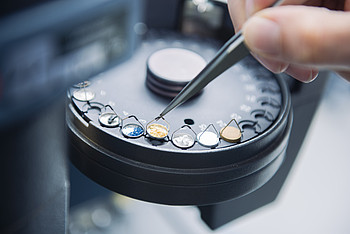
Varied techniques are applied in order to characterize the structure of small molecules and mixtures of different components. Furthermore, the identification of residual monomers, solvents, modification groups and additive in polymers as well as the determination of reaction kinetics is performed.
- NMR spectroscopy
- Head-space / Pyrolysis-GC-MS
- Dynamic scanning calorimetry
- TGA-GC-MS,
- Elemental analysis,
- Thermal analysis
Contact to our experts: Prof. A. Lederer, Dr. S. Boye and Dr. H. Komber
- Macromolecules Structure and Physics
-
Macromolecules Structure and Physics
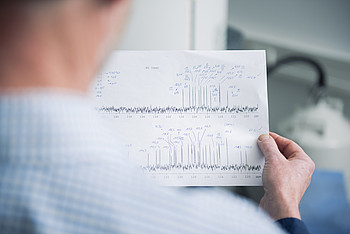
Analysis of chemical structure of polymers, monomer composition, microstructure, cross-linking reactions, physical processes (such as melting, glass transition, crystallization) etc.
- NMR spectroscopy,
- IR spectroscopy,
- Raman spectroscopy,
- Pyrolyse-GC-MS,
- MALDI mass spectrometry,
- DSC
Contact to our experts: Prof. A. Lederer, Dr. S. Boye, Dr. H. Komber and Dr. M. Malanin
- Molecular Spectroscopy
-
Molecular Spectroscopy
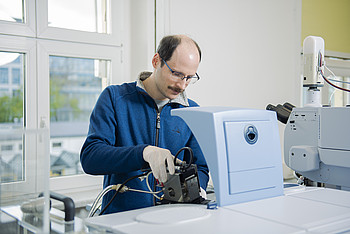
We use FTIR-, NIR and Raman spectroscopy for structure analysis of polymers and materials.
We investigate orientation of polymer chains (segments) at mechanical deformation by Rheo-optical FTIR, H-bonds by FTIR and phase transitions and separations in blends, composites and copolymers by FTIR and Raman.
With the Rapid-Scan-method we can do temperature-dependent measurements.
For FTIR we use devices for transmission measurements, diffuse and specular reflectance measurements and ATR measurements. Furthermore we have the coupling of TGA with FTIR.
With FTIR and Raman microscopy including mapping and Imaging we can investigate samples until 500 nm and with the coupling of AFM and FTIR (AFM-IR) samples until 80 nm.
Contact to our experts: Dr. D. Fischer and Dr. M. Malanin
- Macromolecules Separation
-
Macromolecules Separation
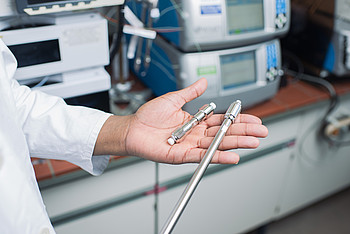
Our expertise on molar mass and size distribution identification, viscosity distribution, conformation analysis using MALDI-TOF-MS, SEC and AF4(SLS, DRI, UV-Vis, Visco), Visco, DLS (90°, T-dependent), SLS, and preparative chromatography.
Special focus is on advanced analysis of functional polymer systems on a molecular level:
- complex macromolecular architectures,
- hybrids; development of methods for separation of polymer systems at different levels;
- for in-situ characterization of responsive materials and multimodal distributions, covering molar mass, size, conformation, scaling and chemical structure (TD-SEC, HT-SECD4, LC-MALDI, ThFFF-SLS).
Contact to our experts: Prof. A. Lederer and Dr. S. Boye
- Biomacromolecules Analysis
-
Biomacromolecules Analysis
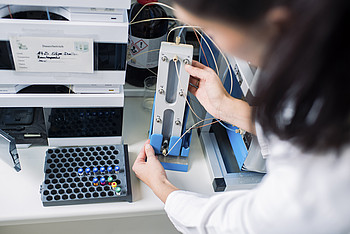
We are focused on in-depth physicochemical understanding of molecular conformation in solution, inter- and intramolecular interactions, complexation, quantitative and qualitative drug-delivery studies.
Therefore, we use:
- Zeta-potential-determination,
- DLS,
- multidetection AF4,
- DLS-Fluorescence-UV-Vis Spectrometer,
- Hollow-fiber-filtration and Ultrafiltration devices,
- Ultracentrifuge,
- Freeze drying processes,
- QCMD,
- UV-cross-linking processes,
- Spincoating,
- and Ellipsometry.
Furthermore, we develop and apply microfluidic devices.
Contact to our experts: Prof. A. Lederer, Dr. E. Bittrich and Dr. S. Boye
- Microplastics Analysis
-
Microplastics Analysis
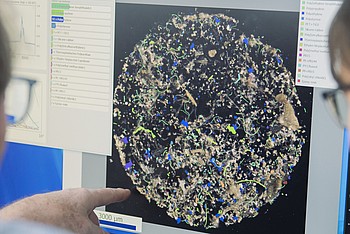
We characterize microplastics samples from different environmental compartments (soils, water, rivers, oceans, atmosphere), food, packaging and biota by FTIR and Raman microscopy on single pieces > 500 µm.
Below 500 µm we use fractionated filtration on silicon filters with different pore sizes until 1 µm for the measurements.
We can identify and quantify microplastics on these filters semi automatically with the in-house open source software GEPARD with a combination of optical particle identification and segmentation with FTIR and/or Raman microscopy.
Using different spectral databases for the automatic evaluation we can identify 1000 particles per hour.
Contact: Dr. D. Fischer
- Ultra-thin Film Spectroscopy
-
Ultra-thin Film Spectroscopy

Optical properties of polymer films with thicknesses from 1 – 1000 nm (variable angle spectroscopic ellipsometry (VASE) and Müller-Matrix Ellipsometry), Processes at solid-liquid interfaces analyzed by in-situ spectroscopic ellipsometry (stimuli-responsive surfaces):
- swelling and adsorption of biomolecules;
- quantification of adsorbed amounts, in-situ thicknesses and in-situ optical constants;
- in-situ imaging of swelling and adsorption (Anisotropic Contrast Optical Microscopy, Müller-Matrix Imaging),
- determination of the glass transition temperature in thin polymer films,
- molecular order (small molecules and macromolecules) in thin, anisotropic and absorbing organic layers for OPV and OLED applications,
- Ultra-thin film IR-analysis (Infrared reflection absorption spectroscopy (IRRAS) and multiple reflection ATR-FTIR),
- correlation of optical anisotropy with crystallographic texture and order (grazing-incidence wide angle X-ray spectroscopy (GIWAXS)) in thin films,
Contact to our experts: Dr. E. Bittrich and Dr. M. Malanin

